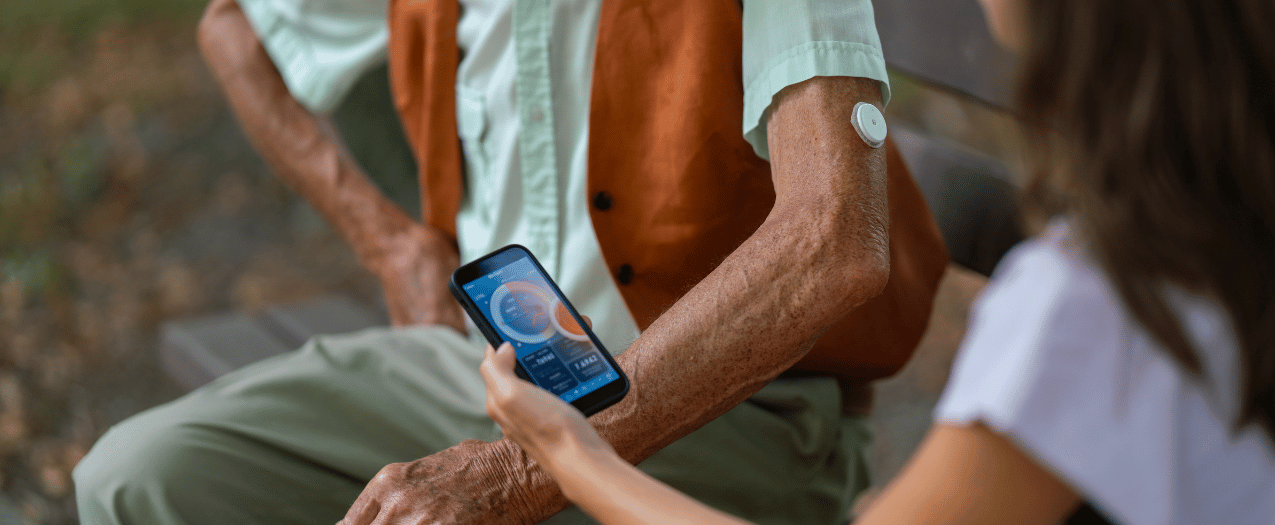
There are currently around 38 million adults living with some type of diabetes mellitus in the US, and the rates of diagnosis continue to rise. Of this number, 1 in 5 don't know they have it. Although childhood diabetes is increasing in prevalence, type 2 diabetes is often diagnosed in adulthood. A later onset of diabetes can reduce the risk of long-term complications, but the adjustment period may still be challenging. Diabetes care requires several lifestyle changes and ongoing management, and as we get older, we tend to cherish our routines. To help, we've put together the following guide on adjusting to a new diabetes diagnosis in adulthood.
When Do People Typically Get Diagnosed With Diabetes?
The onset of diabetes can vary depending on the type, risk factors, and lifestyle habits. There are quite a few people who have type 1 diabetes who are diagnosed during childhood. There are two noticeable peaks where this occurs—between 4 and 6 or 7 years old, and again between 10 and 14 years old. Although a diagnosis of type 1 diabetes in children was thought to be more common than in adults, 37% of diagnoses are made after the age of 30.
After childhood, a majority of people are typically diagnosed with type 2 diabetes after the age of 45. However, you can get type 2 diabetes at any time. Although less common, there are cases of children, teens, and young adults receiving a type 2 diagnosis. This is correlated to the increase in obesity rates in younger individuals, but there are additional lifestyle and genetic factors involved.
What's the Difference Between Adult-Onset Type 1 Diabetes and Type 1 Diabetes?
When type 1 diabetes is diagnosed in later years, it's sometimes referred to as latent autoimmune diabetes in adults (LADA), adult-onset diabetes, or type 1.5 diabetes. Symptoms typically begin after age 30 and share similar symptoms of type 2 diabetes. This may result in a misdiagnosis, as doctors presume it's early-onset type 2. About 4% to 12% of those who initially receive a type 2 diagnosis end up having LADA. However, there are several differences in management and care, so it's important to undergo testing to determine whether it's type 1 adult-onset diabetes, type 2 diabetes, or any other form of diabetes.
Both type 1 diabetes and LADA are caused by an autoimmune condition that affects the pancreas. In “traditional” type 1 diabetes, the autoimmune attack on insulin-producing beta cells in the pancreas happens quickly, leading to a sudden onset of symptoms and a rapid need for insulin therapy. In adult-onset type 1 diabetes, this autoimmune attack occurs slowly over the years. The slow attack causes a delay in symptoms when your body is at the point where it cannot make enough insulin.
The difference between the two is also apparent in the symptoms. Typically, symptoms of type 1 diabetes happen suddenly and can be pretty severe. Symptoms of LADA are more gradual, which is one reason why it's mistaken for type 2 diabetes. If you’ve been diagnosed with type 2 diabetes, you may want to undergo a screening for LADA if:
- Medications are losing effect over time
- You need increasing doses of medication without changes in weight, activity, or diet
- You have high medication or dosage needs
- You need to add insulin to your medication regimen quickly after diagnosis
- You have a family history of type 1 diabetes or other autoimmune diseases
- You have a personal history of another autoimmune disease
Understanding a Type 2 Diabetes Diagnosis
People with type 2 diabetes are more often diagnosed during later years, but it can also happen during childhood. Still, older adults may be living with type 2 diabetes for years before they experience any notable symptoms. This is because insulin resistance can happen gradually, resulting in symptoms sometimes written off as normal parts of aging—i.e., increased thirst, frequent urination, fatigue, and even blurred vision or high blood pressure.
Unlike type 1 diabetes, which is an autoimmune disease, type 2 diabetes is primarily influenced by lifestyle factors and genetics. It develops when the body becomes resistant to insulin or doesn't produce enough to maintain normal blood glucose levels. Although some individuals may be diagnosed with prediabetes beforehand, others may receive a type 2 diabetes diagnosis after a routine health checkup when elevated blood sugar levels are detected. In either situation, your doctor will help you understand what to do, including whether or not you'll need to take diabetes medicine or use insulin.
What About Other Types of Diabetes?
There are also additional types of diabetes that you may be diagnosed with during your lifetime. Gestational diabetes can occur in women during pregnancy but usually resolves after childbirth. Maturity-onset diabetes of the young (MODY) is a rare form of diabetes that typically occurs before age 30 but can happen later in life. Secondary diabetes, on the other hand, is a type of diabetes that has a known underlying cause. These can include things like cystic fibrosis (CF), polycystic ovary syndrome (PCOS), Cushing's syndrome, hormonal disorders, and even long-term use of certain medications like corticosteroids. If you're at risk for any of these, working with your doctor and monitoring your health is essential.
9 Ways to Adjust to a New Diabetes Diagnosis in Adulthood
Adjusting to a new diabetes diagnosis in adulthood can feel overwhelming at first, but there are plenty of things you can do to help. Here are a few tips to help you ease the transition while maintaining a healthy lifestyle.
1. Get Educated About Diabetes
Understanding your diabetes diagnosis is key to effective management. Learn about the different types of diabetes, how insulin and blood sugar levels work, and the impact of diet, exercise, and medication. Resources from your healthcare provider, diabetes educators, or organizations like the American Diabetes Association can provide valuable guidance.
2. Build a Support System
A strong diabetes support system can make all the difference. Connect with family, friends, or a registered support group who understand the challenges of living with diabetes. Online communities can also offer advice, encouragement, and shared experiences with others managing the condition.
3. Learn How to Monitor Blood Sugar Levels
Monitoring blood glucose is an essential part of diabetes management. Your doctor will guide you on how often to check your levels and your target range. Consider using a blood glucose meter or a continuous glucose monitor (CGM) to track changes and identify patterns to help you adjust your treatment plan.
4. Implement Dietary Changes
A diabetes-friendly diet doesn’t have to be restrictive. Focus on whole, unprocessed foods, fiber-rich carbohydrates, lean proteins, and healthy fats. Take some time to learn how different foods affect your blood sugar to help you develop a sustainable meal plan. And remember, you can still enjoy your favorite foods—moderation and balance are key.
5. Create an Exercise Plan
Regular physical activity helps regulate blood sugar levels and improves overall health. Aim for at least 150 minutes of moderate exercise per week (30 minutes per day for five days), such as walking, cycling, or swimming. If you're new to exercise, start small and gradually build up to more consistent activity.
6. Try to Manage Stress and Be Proactive About Mental Health
Stress can impact blood sugar levels and overall well-being. Practice relaxation techniques such as meditation, deep breathing, or yoga. If you're struggling with the emotional impact of your diagnosis, consider speaking with a therapist or counselor. There's no shame in getting a bit of extra help.
7. Follow Your Medication Plan
Whether your doctor prescribes oral medication, insulin, or another treatment, consistency is key. Understand how your medications work, when to take them, and any potential side effects. Set reminders if needed and maintain regular appointments with your diabetes specialist.
8. Be Prepared for Social Situations and Travel
Dining out, attending parties, or traveling can require extra planning. Socialization is an integral part of mental health and overall well-being, and being prepared can help reduce any related anxiety or stress. For example, if you're going out to eat, check the menu beforehand or call and ask about certain dishes. Doing so can help you make healthier choices without any pressure. It's also important to carry diabetes supplies with you, just in case.
9. Set Realistic Goals and Be Patient
Lifestyle changes don’t happen overnight, and that's okay. Instead of trying to completely change your habits in a day, focus on setting small, achievable goals. This can help you gradually improve your health and build habits that will actually last. It also gives you a chance to celebrate progress instead of putting all your energy into striving for perfection.
10. Know Your Rights
Adults with diabetes often have to deal with things like diabetes in the workplace, dealing with employers, ADA and FMLA, taking time off under disability benefits, as well as dealing with their insurance companies and getting medications and services covered, prior authorizations, and appeals. Most people will be dealing with these things for the first time, and it is exhausting, upsetting, and can be financially ruinous. Therefore, knowing your rights is important so you can advocate for yourself if needed.
A diabetes diagnosis in adulthood is a significant life change, but you can lead a full, healthy life with the right mindset and habits. Take it one step at a time, and remember—you’re not alone in this journey. To help ensure you have all the diabetes supplies you need to manage your condition, partner with Byram Healthcare today. Byram customers also get exclusive access to ByramConnect™ powered by the Welldoc® App, an app designed to help lower your A1C and manage your diabetes.



